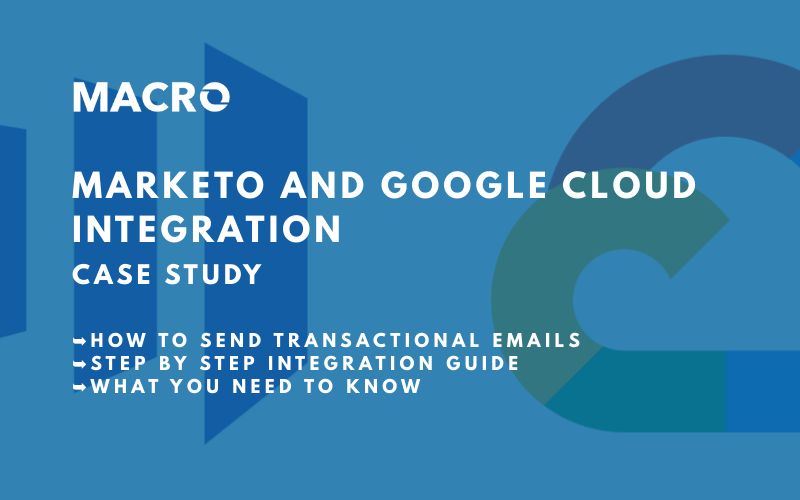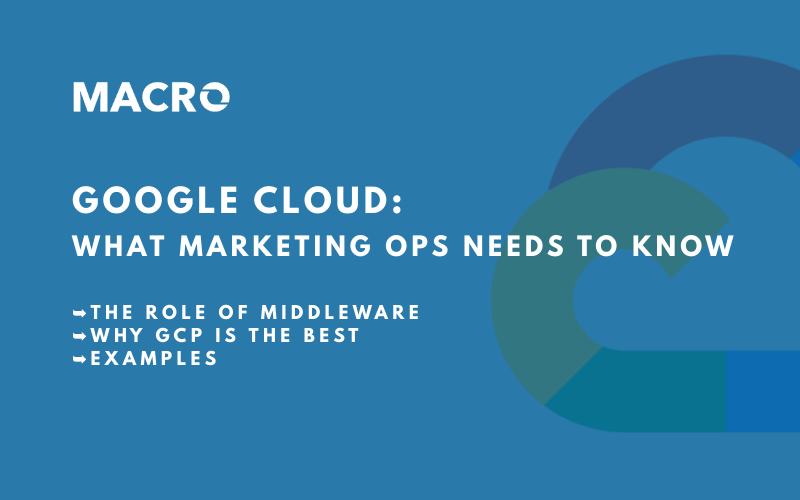
Macro President & Founder Dan Radu and Security Compass’ ABM Manager Heidi Vandermeer introduced and explored key aspects of Account Based Marketing in a recent webinar. The event was initiated and attended by two communities, MarTech Toronto and ABM Toronto. Over the course of 40 minutes, Radu and Vandermeer covered ABM basics, account targeting, data building and three top tips for presenting data internally.
ABM has risen in popularity in recent years as a marketing practice driven by data and technology to rethink and evolve dated marketing approaches. Its two defining features are its focus on target accounts, and its emphasis on marketers’ need to know their addressable market..
Instead of targeting a person with content, ads, or outreach, ABM focuses on companies themselves. These are the accounts, and they could be a large organization, a department within it, or anything in between.
Instead of casting a wide net, Vandermeer likens the approach to “Fishing with a spear,” a term first carved out by Jon Miller, founder of Engagio. “With something like demand generation, you bring in a bunch of people and you filter out who you’re looking for afterward,” she said. “With account based marketing you start with the people you’re looking for.”
Web content, paid media, targeted messages, and other marketing tactics are designed with these accounts’ needs in mind. The creation of ABM lists is mission critical, as are the targeting criteria that determine the breadth and depth of your ABM efforts. To create the right list, the sales team must be an equal partner from the outset.
Dan stressed the importance of defining an Ideal Customer Profile (ICP) instead of individual buying personas. As with all things ABM, ICP is company-focused while buying personas revolve around individual behaviours.
“New business is expensive to acquire,” said Radu. “So you must focus time and energy very carefully in order to be successful.”
When starting off with a pilot project, it’s key to have both sales and marketing leadership alignment. Co-creating the targeted list of accounts is a waste of time if marketing hands over Marketing Qualified Accounts (MQA) that sales does not view as likely targets.
The process to developing your target account lists has several inputs—and the options for building one fittingly include approaches from both marketing and sales frameworks. Radu and Vandermeer dive into many of these, including:
Successful ABM relies on several processes. The webinar explores some of these such as:
ABM is data heavy—it can create a lot of metrics. Getting an ABM pilot off the ground might be a challenge if decision makers are flooded with information. Vandermeer strongly recommends presenting sales related metrics, and only the key ones, such as:
ABM Reporting or Account Hubs are dashboard driven command centres that use visualizations of the metrics above. Their chief purpose is to give C-level decision makers a full understanding of their target addressable market and the value provided by ABM.
By the same token, it may be tempting for many marketers to try and sneak classical marketing metrics into a high level report, such as traffic, impressions or clicks. Heidi argues that even the more robust MQL figures may be too loose for an audience who is laser focused to maximize pipeline health.
ABM may represent a big shift in how things are done in an organization. If siloes are challenged, it could be that much more difficult to change the status quo. One of the best things for a pilot program is a steady stream of good news—internally advertise all wins, such as positive client feedback or a positive boost in key metrics.
For all the insights, deeper discussion, a rich Q&A and more, watch the whole event online in less than 45 minutes.
 Dan Radu is the founder and President of Macro, a global Martech operations agency with deep expertise in helping enterprise companies get their ABM programs off the ground.
Dan Radu is the founder and President of Macro, a global Martech operations agency with deep expertise in helping enterprise companies get their ABM programs off the ground.
For those curious about developing a pilot program, Dan is happy to have a conversation.
 Heidi Vandermeer helps run and organize ABM Toronto, a thriving group of individuals who having varying levels of experience and interest in ABM, from top experts to new practitioners.
Heidi Vandermeer helps run and organize ABM Toronto, a thriving group of individuals who having varying levels of experience and interest in ABM, from top experts to new practitioners.
There are many virtual events planned in the near future—all interested are welcome!

One of our clients here at Macro is a major utility company in the United States. This is their story, challenges and the middleware solution Macro provided for them bringing together different data-points to send order confirmation emails.
Read More
Today, more than ever, companies need to use many digital marketing tools, and a key piece of the puzzle is getting different tech platforms to ‘talk’ to one another. We can achieve this with middleware. Google Cloud Platform is a newer player to the middleware game, but it is easily one of the most affordable, balanced and powerful tools available in 2020.
Read More
It would be a shame to spend a small fortune on an expensive car, only for it to sit in your garage, rarely used. This depressing story is something that happens to many modern organizations—except it’s not an expensive vehicle that they leave rusting in a garage, it’s their enterprise marketing automation platform (MAP)
Read More